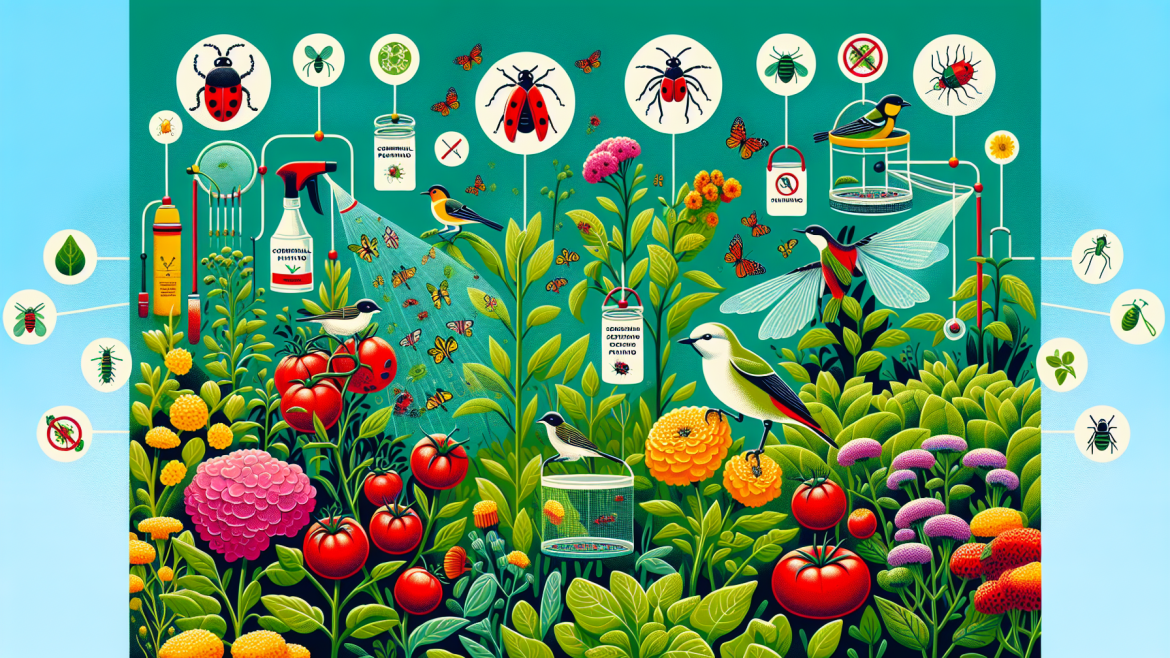Maintaining a healthy, thriving garden involves more than regular watering and fertilizing. One key aspect of garden care is managing pests. Pests can wreak havoc on plants, leading to reduced yields, damaged foliage, and even plant death. Effective pest control does not have to rely solely on chemical interventions. Various strategies can be employed to keep pests at bay, ensuring a flourishing garden.
Integrated Pest Management (IPM)
Integrated Pest Management (IPM) is a holistic approach to pest control that combines different strategies to manage pests sustainably. IPM aims to minimize harm to the environment, humans, and non-target organisms. Here are the main components:
- Monitoring: Regularly inspect your garden to identify pest problems early. Accurate identification of pests is critical for choosing the appropriate control methods.
- Thresholds: Establish action thresholds to determine when pest populations require intervention. Not every pest sighting necessitates action.
- Control Methods: Utilize a combination of biological, cultural, mechanical, and chemical controls based on the specific pest situation.
Biological Controls
Biological control involves using natural predators, parasites, or pathogens to reduce pest populations. Examples include:
Beneficial Insects:
- Ladybugs: These beneficial insects feed on aphids, mealybugs, and other soft-bodied pests.
- Lacewings: Both adult and larval lacewings feed on a variety of pests, including aphids and caterpillars.
- Predatory Mites: Useful for controlling spider mites and thrips.
Microbial Insecticides: Products like Bacillus thuringiensis (Bt) contain bacteria that produce toxins harmful to specific pests, such as caterpillars, while sparing beneficial insects and humans.
Cultural Controls
Cultural control methods involve altering the environment to make it less conducive to pests. These methods include:
- Crop Rotation: Growing different crops in a specific sequence to disrupt pest life cycles. For example, rotating between leafy greens and root vegetables can prevent soil-borne pests from establishing.
- Sanitation: Removing plant debris, fallen fruits, and weeds that may harbor pests. Clean gardening tools to prevent the spread of pathogens.
- Plant Selection: Choose pest-resistant varieties and native plants that are naturally adapted to your region and less prone to pest problems.
- Timing: Adjust planting times to avoid peak pest periods. For instance, planting early-maturing varieties can help crops avoid insect infestations.
Mechanical and Physical Controls
Mechanical and physical controls involve using barriers or manual methods to reduce pest numbers.
- Handpicking: Regularly inspect plants and handpick visible pests like beetles and caterpillars. Drop them into soapy water to kill them.
- Barriers: Use row covers, nets, and collars to physically exclude pests from plants. These barriers can protect against insects, birds, and larger animals.
- Traps: Utilize traps like sticky traps, pheromone traps, and baited traps to capture and monitor pest populations. These can be particularly effective for flying insects.
Chemical Controls
Chemical controls should be used as a last resort and in conjunction with other methods. Employing pesticides responsibly can help minimize their negative impacts.
- Organic Pesticides: Use organic and less-toxic pesticides, such as neem oil, insecticidal soaps, and horticultural oils. These options are less harmful to beneficial insects and the environment.
- Spot Treatment: Apply chemical treatments only to the affected areas rather than a broad application. This approach reduces exposure and preserves beneficial organisms.
- Follow Labels: Always follow the product label instructions for application rates, timing, and safety precautions.
Conclusion
Effective pest control in your garden involves a combination of strategies that focus on prevention, monitoring, and targeted interventions. By adopting an integrated approach that utilizes biological, cultural, mechanical, and, when necessary, chemical controls, you can manage pest populations sustainably. Remember, a healthy garden ecosystem is your best defense against pests. Encourage biodiversity, maintain good garden hygiene, and keep a watchful eye on your plants to create an environment where pests are less likely to thrive.
